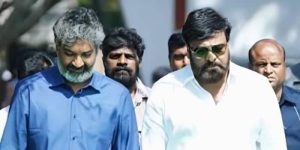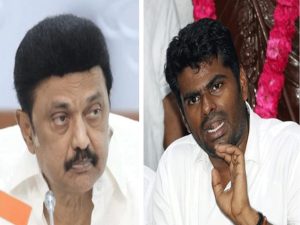
At the age of 54, Dinesh Shenoy uncovered his true purpose in life—a revelation that would lead to a remarkable transformation just two years later. Now at 56, Shenoy’s dreams as a filmmaker have reached unprecedented heights, following the remarkable success of his Kannada short film, “Madhyantara,” which won two prestigious National Awards this year. Shenoy was recognized with the Best Debut Director award, while the esteemed Suresh Urs received the accolade for Best Editor.
“Madhyantara” tells the story of two ardent film enthusiasts who work various odd jobs while striving for their big break in the film industry. This narrative mirrors Dinesh’s own tumultuous journey, which eventually brought him into the realm of filmmaking.
Originating from Bantwal, a small town located 30 kilometers from Mangaluru in Karnataka, Shenoy spent his childhood immersed in Kannada cinema, spanning all genres. Although initially drawn to photography, he found himself steered toward running the family business, selling air conditioners. “I had no business skills— it simply wasn’t suited for me,” Shenoy recalls.
Seven years into the air conditioner business, a pivotal moment occurred with a relocation to Delhi. “You know how parents used to worry incessantly about their children’s careers. I finally gathered the courage to tell my father that I wanted to pursue my passion,” recounts Shenoy. He enrolled in a cinematography crash course in Noida and began his career from the ground up. Starting as a light boy and focus puller, Shenoy eventually progressed to become an independent cinematographer over several years.
Shooting commercial videos for renowned companies served as an invaluable educational experience in storytelling. “I managed to communicate the unique selling propositions of products through innovative videos that were somewhat longer than conventional advertisements,” Shenoy explains. Despite the demands of his burgeoning new career phase, Shenoy’s passion for films remained unwavering.
His burgeoning interest in the film industry intensified further when he secured a position as a line producer for a Hindi film. “Whenever Bollywood productions came to shoot in Delhi, I served as the production executive, ensuring smooth proceedings,” Shenoy elaborates. His interaction with acclaimed director Ashutosh Gowariker during this period provided fresh insights into the art of filmmaking.
“I collaborated with him on notable projects like ‘Swades’ (2004) and ‘Jodha Akbar’ (2008). I was oblivious to things like call sheets. Post-‘Lagaan’, the concept of having multiple assistant directors with designated roles became a standardized practice. These are lessons I incorporated into my projects. Such practices improve efficiency and clarity on sets,” Shenoy notes.
“Ashutosh has become a close friend,” Shenoy continues. “He’s an enthusiastic reader, and whenever he’s in Delhi, he contacts me to inquire about new bookstores in the city.”
Another unforgettable chapter in Shenoy’s career was working with the legendary Wes Anderson as a production assistant on “The Darjeeling Limited.” “I’ll always remember his fascination with the iconic Ambassador car. He would often ask, with child-like excitement, ‘Dinesh, when can I ride in an Amby?’ Wes also showed great enthusiasm to explore India, as it was his first visit,” Shenoy recounts.
As the COVID-19 pandemic unfolded, Shenoy viewed this challenging period as a hidden blessing.
. He found himself with ample time to watch numerous interviews with veteran Kannada actors and filmmakers. “In one such interview, producer RF Manikchand, known for many hits with the celebrated actor Ambareesh, expressed his lifelong passion for films. Living in Chikkamagaluru, he couldn’t afford the 50-paisa ticket. He and a friend could only afford 25 paisa each, resulting in one of them watching the first half and the other, the second. They’d share what they saw with each other afterward.”
This story inspired the creation of “Madhyantara.” The film ingeniously revolves around the concept of two movie halves. Veeresh and Ajay Neenasam deliver outstanding performances as film buffs who came of age in the 1970s. Working as waiters in a modest town, they harbor a deep love for cinema. The film poses the question: What happens when their combined earnings can only buy a single movie ticket? Fate eventually leads them to the film industry. But can they thrive in its cut-throat environment?
“Madhyantara” serves as an homage to the golden era of 1980s Kannada cinema. Shenoy’s meticulous research bore fruit as he successfully recreated iconic moments from cinema history, such as the filming of Dr Rajkumar’s classic “Hosa Belaku” and the magnetic presence of Ambareesh on set.
Teaming up with renowned art director Shashidhar Adapa significantly boosted Shenoy’s confidence. “He was thrilled about crafting a period film. Adapa had a great understanding of that time. We used all the props, including clapboards from the 80s,” Shenoy shares.
Editor Suresh Urs, a frequent collaborator with Mani Ratnam, was another crucial asset to the team. “His involvement was invaluable. Urs accompanied me throughout the project, providing key input at every stage of production. Filming on celluloid delights him, as it recalls his early professional days. In digital filmmaking,” he often observes, “there are endless takes, exhausting the actors. Celluloid demands precision.”
Shenoy instructed his cinematographer, Sunil Borkar, to focus on simple visuals. “We wanted ‘Madhyanthara’ to authentically replicate an 80s film. No flashy visuals here—we employed minimal gadgets, with just one crane shot and a couple of trolleys,” Shenoy explains.
After premiering at the International Film Festival of India (IFFI) in Goa, the film was selected to compete at the National Film Awards. Shenoy believes that creating “Madhyantara” as a proof-of-concept short film was a strategic move. “I aspire to create a feature film. Instead of pitching a script to a producer, I decided to showcase my team’s capabilities through this short film. It allows producers to evaluate my writing skills and get a sense of the unique imagery I can bring to the screen.”












